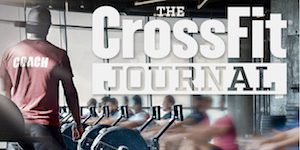Strength training: The Fundamentals
Strength training is not just for bodybuilders or athletes but is one of the most crucial activities to promote, improve and maintain the health of the adult population as well as reduce the risk of chronic disease or premature death.
There have been a lot of studies on strength and actual muscular loss in older populations and it seems that no matter what as you get older you will loose strength and muscle mass. Although this process is not something we can stop it is something we can be prepared for.
The first thing people think of when strength training is mentioned is getting big, becoming a bodybuilder, putting on huge amounts of muscle mass. This can often scare people away. Firstly this is not something that happens easily and will not happen to you unless that is your complete focus and goal, which is another topic altogether.
The fact is that strength training does so much more for your body than simply develop muscle mass. When done correctly strength training will strengthen our joints, tendons and ligaments, which will enable you to live your day-to-day life efficiently and safely with a reduced risk of injury. The more functional we can become as human beings, the more we will be able to support our own independence.
The effort you put into strength training now will prepare you for the inevitable loss of strength that comes with age. Its never too late to start, its not about being the best from the start, its about getting better than you are, every little bit counts.
Taking the perspective of an athlete the stronger you are the easier exercise becomes, the faster you can complete a workout, the harder you are to tackle, the risk of getting injured decreases. The benefits of strength training once done properly are endless.
Just some of the benefits of strength training are listed below:
- Strength improves balance and stability: decreases risk of falling and injury
- Builds Muscle strength: reduce Muscle loss. Every decade after approximately 30 years of age adults l ose 5-7pounds of muscle. Strength training helps rebuild lost muscle and slow the process of age related muscle loss (Sarcopenia).
- Reduce risk of Osteoporosis: Strength training has been proven to increase bone density and prevent osteoporosis.
- Reduce Blood pressure: Strength training can reduce and prevent high blood pressure through strengthening the heart muscle making it beat more efficiently.
- Increase calorie burn/Metabolic rate: Strength training increases the metabolic rate. The more muscle you have the more calories burnt while at rest. This significantly affects long-term weight loss.
- Reduce low back pain: Strengthening the core through functional movement exercises has proven to increase lower back strength and reduce low back pain.
- Reduce anxiety symptoms
- Improve cognition among older adults
- Improve self esteem
The Athlete:
Virtually any strength training will trigger a response in an untrained or novice athlete. Following your own programming in the beginning is not advised. This is often the cause of relatively inexperienced athletes moving with poor technique, who achieve initial success and then plateau or often go backwards due to injury, poor movement patterns or lack of appropriate progression. So here is the best advice I can give you to separate your self and your program from others.
Take the time to build a foundation: without a foundation risk of injury is quite high, work on the basic concepts of movement!!
Core Strength: The ability to keep an active neutral core. Focus on not switching off or hyperextending while applying force in your squat, deadlift, press etc. An active core evenly loads the vertebral disks of the spine creating a safe and effective transmission of forces.
Understand Movement: What muscles are you working, are you able to keep in position, are the correct muscles firing? Often people find it quite difficult to fire their glutes and put excessive pressure on the lower back.
Core to Extremities: High levels of power are generated from the center out. This happens in a wave of contractions from the high force low velocity muscles of the core to the low force high velocity muscles of the extremities. You want to let the force of your hips carry over to your arms by not violating this chain of movement. Error can be seen in movements such as prematurely bending the arms in the Olympic lifts.
Full Range of Motion: Athletes should be moving through their full range of motion. For example, performing a squat requires depth of hip crease below knee. If mobility restricts this work that first! Partial range of motion results in partial strength and flexibility. Attack the basics of movement first and the strength will come, don’t skip the steps!
Finally Do some Handstands: Wall climbs, handstand kickups, free handstands should be a big part of your training, which I would usually put into every warm up. A handstand requires your entire body to kick into action. It is a skill that increases strength, balance and mobility. Learning how to keep you’re core switched on upside down makes it a whole lot easier standing up. HS develop massive shoulder mobility and strength and have a never-ending list of progressions, which allows you constantly challenge our skills and your body.



